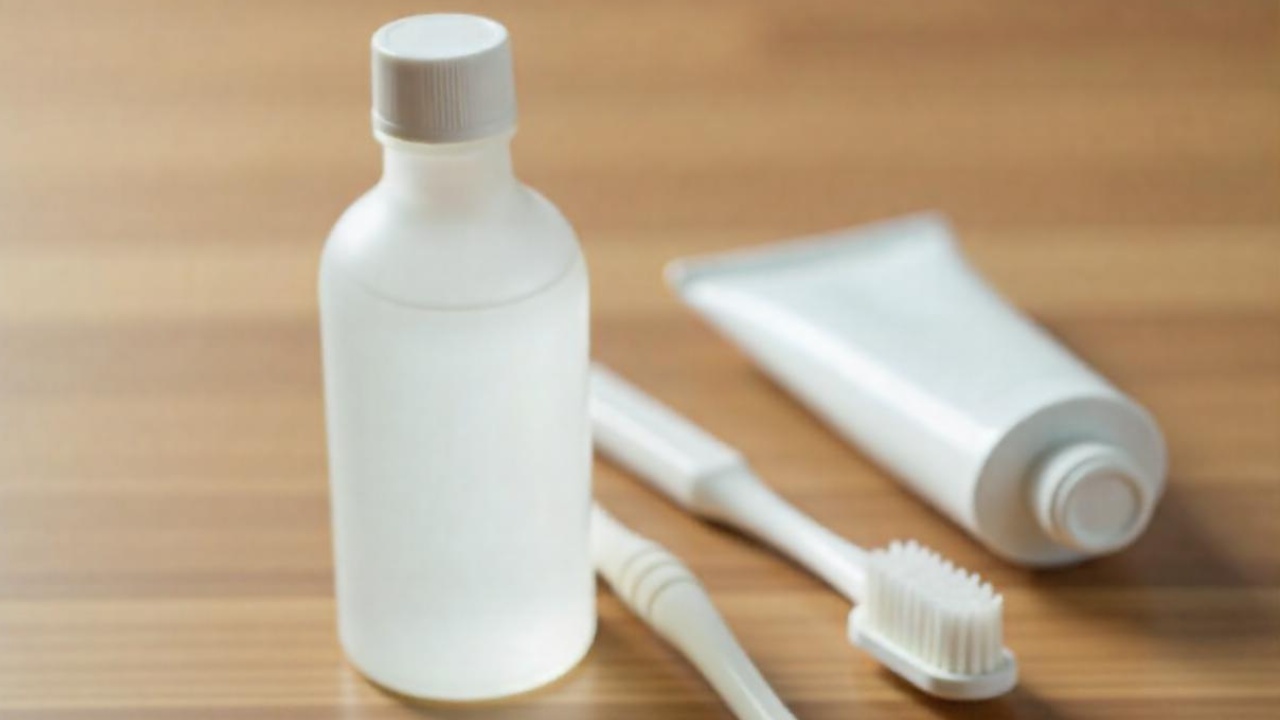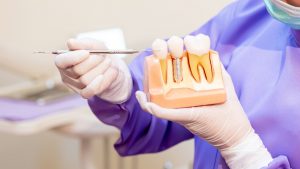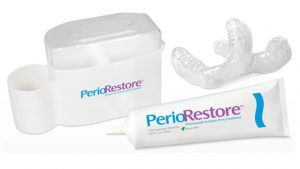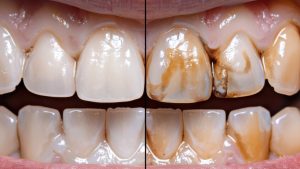Maintaining good oral hygiene is essential for a healthy smile, fresh breath, and strong teeth. Regular brushing, flossing, and using mouthwash help remove plaque, prevent cavities, and fight bacteria that cause gum disease. While fluoride-based toothpaste and antiseptic rinses are common, many people explore alternative cleaning agents for brighter and healthier teeth.
One such popular and cost-effective solution is hydrogen peroxide (H₂O₂). Widely known for its disinfectant properties, it has been used for decades in oral care products, whitening treatments, and DIY home remedies.
Hydrogen peroxide is generally safe for oral use when used correctly and in moderation. In fact, many commercial whitening products and mouth rinses contain low concentrations of hydrogen peroxide to enhance teeth brightness and oral hygiene.
However, misuse or overuse—such as using undiluted H₂O₂ or applying it too frequently—can lead to gum irritation, tooth sensitivity, and enamel erosion. In this guide, we’ll explore the benefits, proper usage methods, and safety precautions to ensure you get the best results from hydrogen peroxide while keeping your teeth and gums healthy.
Understanding Hydrogen Peroxide in Dental Care
Hydrogen peroxide (H₂O₂) is a mild antiseptic and oxidizing agent composed of two hydrogen atoms and two oxygen atoms. It is chemically similar to water (H₂O) but contains an extra oxygen molecule, which gives it its unique disinfecting and bleaching properties.
When exposed to light, heat, or enzymes, hydrogen peroxide breaks down into water (H₂O) and oxygen (O₂), releasing free oxygen radicals. These radicals react with organic substances, including bacteria and stains, making it an effective cleaning and whitening agent. Here is how this works as a natural bleaching and antibacterial agent.
Whitening Effect:
Hydrogen peroxide oxidizes stains on the enamel, breaking down pigmented molecules from coffee, tea, wine, and tobacco. This process lightens the color of the teeth, making them appear whiter over time. Most commercial whitening strips, gels, and toothpastes use H₂O₂ as the active ingredient.
Antibacterial & Antiseptic Properties:
Hydrogen peroxide releases oxygen when it comes into contact with bacteria, disrupting their cell membranes and killing them. It helps reduce plaque buildup, preventing cavities and gum disease. The antibacterial action makes it effective in treating minor mouth sores, gingivitis, and even bad breath (halitosis).
Healing & Anti-Inflammatory Benefits:
Due to its ability to clean wounds and kill bacteria, hydrogen peroxide is sometimes used to treat minor gum infections, ulcers, and sore throats. When swished in the mouth, it produces foam as it reacts with organic material, helping to loosen debris and bacteria from teeth and gums.
How to Safely Clean Your Teeth with Hydrogen Peroxide
Hydrogen peroxide can be an effective and affordable tool for oral hygiene, but using it incorrectly can lead to gum irritation, enamel damage, or tooth sensitivity. To ensure safe and effective use, follow these best practices for preparation and application.
Preparing H₂O₂ Dilution
The safest and most commonly used hydrogen peroxide concentration for oral care is 3% (over-the-counter strength). Anything stronger than 3% can be too harsh for teeth and gums. To avoid irritation and ensure safety, always dilute H₂O₂ before using it in your mouth. The recommended dilution ratio is:
- Mix equal parts hydrogen peroxide (3%) and water.
- Example: 1 tablespoon (15ml) of hydrogen peroxide + 1 tablespoon of water.
This creates a milder solution that is strong enough to kill bacteria and whiten teeth without harming the enamel or gums.
Why Undiluted Hydrogen Peroxide Can Be Harmful
- Enamel Damage: High concentrations (above 3%) or frequent use can weaken tooth enamel, making teeth more sensitive and prone to decay.
- Gum Irritation: Direct application of undiluted hydrogen peroxide may burn or irritate gums, causing pain and discomfort.
- Oral Tissue Damage: Excessive use can disrupt the natural balance of bacteria in the mouth, potentially leading to dry mouth or infections.
Always dilute hydrogen peroxide and use it in moderation to avoid these risks.
Different Ways to Use Hydrogen Peroxide for Dental Hygiene
1. Hydrogen Peroxide Mouthwash (Safe Daily Use)
Using hydrogen peroxide as a mouth rinse helps kill bacteria, freshen breath, and promote gum health. Here’s a step-by-step guide to using hydrogen peroxide as a mouthwash:
- Mix: Combine equal parts (1:1 ratio) of 3% hydrogen peroxide and water.
- Swish: Take a small sip (about a tablespoon) and swish it around your mouth for 30-60 seconds.
- Spit It Out: Do NOT swallow the solution—spit it out completely.
- Rinse with Water: After spitting, rinse your mouth thoroughly with plain water.
How Often Should You Use It?
- For general oral hygiene: Use 2-3 times per week to kill bacteria and freshen breath.
- For gum health: If treating sore gums or gingivitis, you can use it once daily for a short period (about a week), then reduce usage.
What to Avoid:
- Do NOT swallow: Swallowing hydrogen peroxide can irritate the stomach and throat.
- Do NOT use too frequently: Using it daily for long periods can dry out oral tissues and weaken enamel.
2. Hydrogen Peroxide & Baking Soda Toothpaste (For Whitening)
A mixture of hydrogen peroxide and baking soda is a popular DIY teeth whitening remedy. Here’s how to mix It properly:
- 1 teaspoon baking soda
- ½ teaspoon 3% hydrogen peroxide
- Mix to form a smooth, spreadable paste (add a few drops of water if needed).
How to Use It:
- Apply the paste to your toothbrush.
- Gently brush your teeth for 1-2 minutes (avoid scrubbing too hard).
- Rinse your mouth thoroughly with water.
The benefits of this method are that it helps remove surface stains from coffee, tea, and tobacco. It also kills bacteria that cause bad breath and plaque buildup.
Risks & Precautions:
- Baking soda is abrasive and can wear down tooth enamel over time.
- Use no more than 2-3 times per week to prevent enamel erosion.
- If you experience tooth sensitivity, discontinue use.
3. Spot Treatment for Stains & Gum Infections
For stubborn stains or gum infections, hydrogen peroxide can be used as a targeted treatment.
How to Use It for Stain Removal:
- Dip a cotton swab or Q-tip into a small amount of diluted hydrogen peroxide (3% mixed with water).
- Apply it directly to the stained area of your teeth.
- Let it sit for 30-60 seconds, then rinse your mouth thoroughly.
Caution: Avoid prolonged use on the same spot, as excessive exposure may weaken the enamel.
How to Use It for Gum Infections & Sores:
- Mix half water, half hydrogen peroxide in a small cup.
- Dip a cotton ball in the solution and place it on the affected area for 30 seconds.
- Spit out and rinse your mouth with plain water.
- Repeat once daily for 3-4 days, then stop to prevent irritation.
Alternative Natural Remedies for Teeth Whitening

While H₂O₂ is a popular and effective teeth-whitening agent, some individuals prefer natural alternatives to avoid potential risks like tooth sensitivity or enamel erosion. Below are some well-known natural remedies that may help brighten teeth safely and effectively.
1. Baking Soda (Sodium Bicarbonate)
Baking soda is a mild abrasive that helps remove surface stains from teeth without being too harsh on enamel. It also creates an alkaline environment in the mouth, reducing bacterial growth.
How to Use It:
- Mix 1 teaspoon of baking soda with a few drops of water to form a paste.
- Brush your teeth gently for 1-2 minutes using circular motions.
- Rinse thoroughly with water.
Caution: Overuse may weaken enamel. Use 2-3 times per week at most.
2. Oil Pulling (Coconut Oil, Sesame Oil, or Sunflower Oil)
Oil pulling is an ancient Ayurvedic practice that involves swishing oil in the mouth to remove toxins, bacteria, and plaque buildup that may contribute to yellowing teeth.
How to Use It:
- Take 1 tablespoon of coconut oil (or sesame/sunflower oil).
- Swish it around in your mouth for 15-20 minutes.
- Spit the oil into a trash can (avoid spitting in the sink to prevent clogging).
- Rinse with warm water and brush your teeth afterward.
Caution: This is not an instant whitening solution, but it may help maintain oral hygiene over time.
3. Activated Charcoal
Activated charcoal is a highly porous substance that binds to toxins and stains on the teeth, helping to lift surface discoloration.
How to Use It:
- Wet your toothbrush and dip it into activated charcoal powder.
- Brush your teeth gently for 1-2 minutes.
- Rinse thoroughly until no black residue remains.
Caution:
- Use sparingly (1-2 times per week), as excessive use may erode enamel.
- Can be messy—take care when using it.
4. Apple Cider Vinegar (ACV) Rinse
Apple cider vinegar has natural acidic properties that may help remove stains from teeth and kill bacteria.
How to Use It:
- Mix 1 teaspoon of ACV with 1 cup of water.
- Swish it around your mouth for 30 seconds.
- Rinse with plain water to neutralize acidity.
Caution: Due to its acidic nature, frequent use can erode enamel. Use only once or twice per week.
5. Strawberries & Baking Soda Paste
Strawberries contain malic acid, which helps break down stains, while baking soda provides gentle abrasion.
How to Use It:
- Mash one ripe strawberry and mix with ½ teaspoon of baking soda.
- Apply the paste to your teeth and leave it on for 5 minutes.
- Rinse thoroughly and brush with regular toothpaste.
Caution: Since strawberries contain natural sugars and acids, rinse your mouth well to prevent enamel erosion.
Comparison Table of Natural Whitening Remedies
| Remedy | How It Works | Frequency of Use | Pros | Cons |
| Baking Soda | Mild abrasive removes surface stains | 2-3 times per week | Affordable, easy to use | Overuse may weaken enamel |
| Oil Pulling | Removes toxins and plaque buildup | Daily for best results | Natural, promotes oral health | Takes time, no instant results |
| Activated Charcoal | Absorbs toxins and stains | 1-2 times per week | Effective for stain removal | Can be messy, may erode enamel |
| Apple Cider Vinegar | Acidic properties break down stains | 1-2 times per week | Natural antibacterial agent | Acidic—may weaken enamel over time |
| Strawberries & Baking Soda | Malic acid helps whiten teeth | Once per week | Natural and tasty | Contains acids & sugars that may harm enamel |
Frequently Asked Questions (FAQs) About Cleaning Teeth with Hydrogen Peroxide
1. Can hydrogen peroxide replace regular toothpaste?
No, hydrogen peroxide should not replace regular toothpaste. While it helps with whitening and killing bacteria, it does not contain fluoride, which is essential for strengthening enamel and preventing cavities. Instead, it can be used as a supplement to regular brushing and flossing.
2. How long does it take to see whitening results?
Results vary based on stain severity and usage frequency. Most people notice slight whitening within a few weeks of using hydrogen peroxide rinses or pastes. However, for deeper stains, it may take a month or more to see visible improvements.
3. Is it safe for children to use hydrogen peroxide for oral care?
Hydrogen peroxide is not recommended for young children as they might accidentally swallow it, leading to stomach irritation or nausea. If considering its use for a child, consult a pediatric dentist first.
4. What should I do if I accidentally swallow hydrogen peroxide?
If a small amount (diluted 3%) is swallowed, it may cause mild nausea or upset stomach. Drink plenty of water to help dilute it further. However, if a large amount or higher concentration is ingested, seek medical attention immediately.
5. Can I use hydrogen peroxide every day?
Using hydrogen peroxide daily is not recommended, as it may cause enamel erosion and gum irritation over time. For safe use:
- Mouthwash: 2-3 times per week
- Whitening paste: 1-2 times per week
- Spot treatment: Only when needed
6. Does hydrogen peroxide help with bad breath?
Yes! Hydrogen peroxide kills odor-causing bacteria, making it an effective remedy for bad breath (halitosis). Swishing with a diluted solution can help keep your breath fresh and clean.
7. Can hydrogen peroxide help with gum disease?
It has antibacterial properties that can help reduce gingivitis and minor gum infections. However, it should not replace professional treatment for serious periodontal disease. Consult a dentist for persistent gum problems.
8. What happens if I use hydrogen peroxide too often?
Overuse can lead to:
- Tooth sensitivity: Enamel erosion exposes nerve endings.
- Gum irritation: Prolonged exposure may cause redness or burns.
- Disrupted oral microbiome: Overuse can kill beneficial bacteria.
9. Is store-bought hydrogen peroxide the same as the one used by dentists?
No. Over-the-counter (OTC) H₂O₂ is usually 3% concentration, while professional whitening treatments use higher concentrations (15-40%), applied under controlled conditions to prevent damage.
10. Can hydrogen peroxide be used on dental work (fillings, crowns, veneers)?
Hydrogen peroxide whitens natural teeth but does not change the color of fillings, crowns, or veneers. If you have dental restorations, consult your dentist before using whitening treatments.








